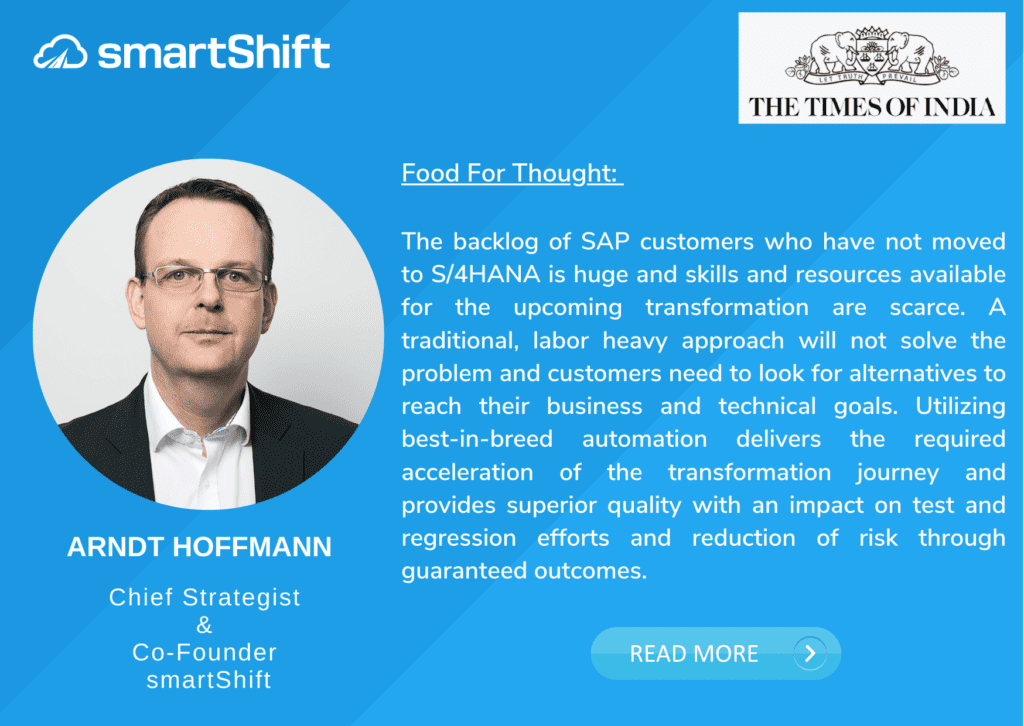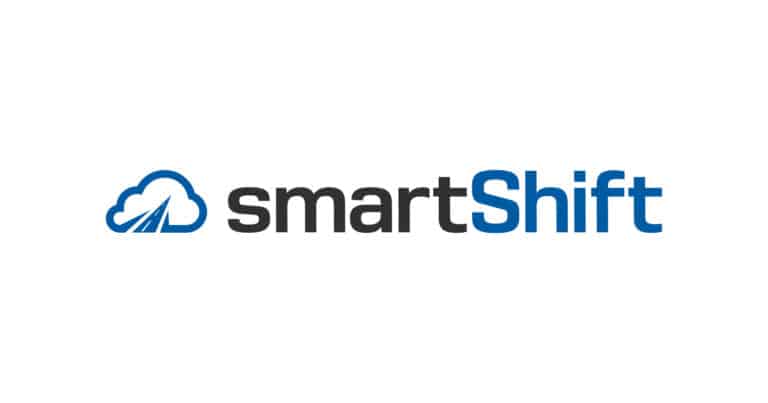
Click here to check out the coverage!

Independent of the data source you choose, the backlog of SAP customers who have not moved to S/4HANA yet is still huge. Research from German-Speaking SAP User Group DSAG in cooperation with American SAP User Group ASUG, end of 2020 listed 20% of customers to be productive on S/4HANA, 30% actively working on the transformation, 30% in preparation, and 20% not started yet. Taking the 41,500 SAP customers into account and considering that most customers run more than one SAP system, the transformation backlog is enormous, and the end of life of SAP ECC in 2027 gets closer.
Skill and resource shortage is the significant risk for S/4HANA transformations
A lot of customers are concerned about the availability of internal and external skills and resources for the upcoming transformation requirements. Recent research released by ASUG shows that 26% of organizations see “skills in supporting, developing, and upgrading SAP systems” as their number one challenge in working with the new S/4HANA technology. The German Business Newspaper “Handelsblatt” end of 2021 titled: “The shortage of consultants becomes a problem for SAP…”. “Handelsblatt” describes the extremely tight situation in the SAP consulting market now and predicts it to become worse in the future. The impact of this market situation is the same for SAP customers and System Integrators. Resources are scarce or just not available, and labor costs for skilled resources increase massively. Even in former low-cost countries like India, the cost for consultants with S/4HANA experience is exploding, and system integrators are battling for the best resources. The impact of the war in Ukraine on the availability of near-shore resources from that region has not even been considered.
Strategies from the past don’t work
The problems of S/4HANA skill and resource shortage are inherent, but what are the strategies to manage without risking S/4HANA business benefits, project timelines, and cost overruns? S/4HANA projects are usually complex and time-consuming, where the existing SAP systems need to be maintained, and ongoing business requirements need to be met. Compromises on transformation scope and quality are no alternative, as they impact the achievable business value and acceptance within the organization. Companies should not repeat the same mistakes as past SAP upgrades, where huge technical debt accumulated in the SAP systems, leading to today’s slow-release cycles, unstable, insecure, and hard to maintain systems. Extending the transformation timelines is also not a good plan, as the time to value gets deferred, and dual maintenance and the double burden just get extended. Utilizing internal teams for non-strategic, one-time transformation tasks is not a good idea either, as these highly skilled teams should focus their in-depth knowledge of the business processes to leverage the full potential of the new S/4HANA digital core.
Do more with less through automation
Which alternatives are left if you can’t compromise on scope and quality, do not have access to unlimited budgets and timelines, and need your internal teams for value-adding work? As a real alternative, you should utilize automation for as many workloads during the S/4HANA Transformation as possible.
Getting your custom processes to S/4HANA or even to decoupled applications outside of S/4HANA involves a lot of tedious tasks. As a first step, you need to identify the strategic applications and apply a risk-free approach to decommission unused code. For the remaining custom processes, you need to identify all technical components and apply compliance and optimization transformation for the new S/4HANA core and data model. That transformation requires addressing thousands of issues in the custom code which can take hundreds of days of manual labor. And with that, you have not even started to address the thousands of legacy security, performance, stability, and maintainability problems in your codebase.
Use best in breed solutions
A fully manual or semi-automated approach with developer tools like SAP ATC Quick Fixes executed by internal or external teams leads to the mediocre outcomes described above: a compromise on scope and quality, budget and timeline overruns, blocked internal resources. And due to the resource and skill shortage, you might not even get the projects staffed with the right skills. Therefore, we recommend utilizing best-in-breed automation, which delivers turnkey solutions and guaranteed outcomes. Real automation should provide, massive acceleration of your transformation journey, superior transformation quality with an impact on test and regression efforts and reduction of transformation risk through guaranteed outcomes. Additionally, it should also ensure, relief to internal resources from mundane manual tasks, optionality to reuse existing processes and assets, while still having the opportunity to address accumulated technical debt and modernise your applications. Business velocity throughout the transformation journey should be delivered as well.
Arndt Hoffmann, Chief Strategist and Co-Founder of smartShift – with 25+ years of experience in the SAP transformation market serving as a Senior Advisor to the global CIO/CTOs looking for SAP business transformation in the coming years.
About smartShift
smartShift Intelligent Automation™ is trusted by global brands to drive innovation. We help customers accelerate the transformation of their SAP systems to next-generation cloud computing environments. Our solutions have delivered thousands of application modernization initiatives, analyzing and converting over 2.5 billion lines of code, eliminating risk, and freeing up strategic resources to focus on growth.
To learn more, please visit: www.smartShift.com










